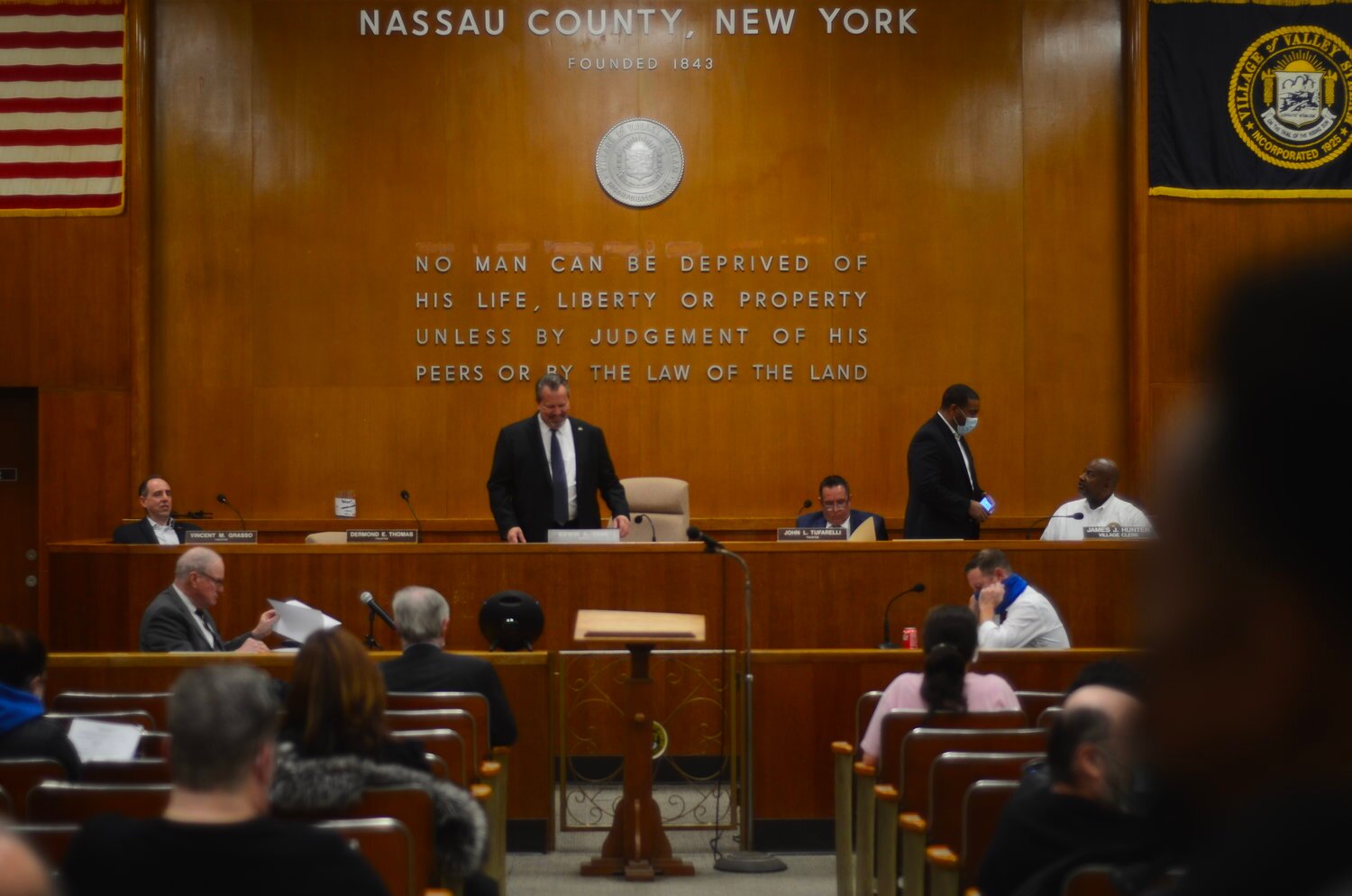Yes, Valley Stream village taxes are up, but here's why its finances see better days ahead
It appears the Village of Valley Stream is turning the page on its financial position. In the end, taxes might be going up a little, but it comes after a smooth budgeting process where there were no surprising sore spots or glaring fiscal problems to address.
Trustees unanimously adopted its $42 million budget for the coming fiscal year, set to begin June 1. Taxes for the average homeowner will rise by roughly $60, according to village treasurer Michael Fox, reflecting a tax rate that increased by just under 2 percent.
That’s expected to raise $33.7 million, all while keeping any increases within the state’s 2 percent property tax cap.
All told, the village seems to be navigating a far different fiscal terrain than where it found itself just two years ago when officials scrambled to rewrite their spending plan. That plan increased taxes by 4.5 percent, intended to replenish the village’s longstanding negative fund balance with added revenue, all while making up for income shortfalls caused by pandemic-related closures of village services.
But more than anything, it was trying to pull itself out from what financial experts saw as a worrisome downward fiscal trajectory fueled by a failure to balance expenses with income. Even state comptroller Tom DiNapoli was concerned at the time, adding Valley Stream to his list of municipalities “susceptible” to fiscal stress as early as 2015.
The fiscal stress scores — determined by factors including year-end fund balance, operating deficits and short-term borrowing — are intended as a warning system for municipalities to improve their financial practices or face further fallout. And the warnings kept coming as the village’s fiscal score swelled to moderate fiscal stress in 2017 to the significant fiscal stress category at the close of fiscal 2020.
But village officials turned it all around, despite the pandemic. They moved back to a less-worrisome fiscal stress category in 2021, and earlier this year, the comptroller removed Valley Stream from the fiscal stress list altogether.
The village’s fiscal stress score is the best it’s been since 2015. And with its recent belt-tightening efforts, officials managed to close this fiscal year with $7 million in fund balance gains.
“From the financial data available to us, the village appears to have seen an increase in property tax revenue and federal aid,” said the state comptroller’s press secretary Mark Johnson. “Over the past three years, the village has seen reductions in stress categories related to its fund balance, operating deficit, cash position and fixed costs.”
But Johnson noted financial winds are favorable for many municipalities, none of which found themselves on the significant fiscal stress list this fiscal year. And this across-the-board decrease in fiscal stress — likely a result of municipalities seizing on larger-than-average federal aid in the form of pandemic relief packages — won’t last forever without sound budgeting practices.
“As that funding winds down, localities should closely monitor their finances,” he stressed.
Despite the village’s marked improvements, Valley Stream’s creditworthiness — at least in the eyes of Moody’s Investors Service — has yet to show the same encouraging lift. The village’s once-feted Aa credit rating in 2011 took a hit when it sunk to its current Ba1 rating in 2019 — a level financial experts largely regard as an investment liability. A lower credit rating often translates to higher borrowing costs when financing capital projects — a cost which ultimately trickles down to the taxpayer.
Moody’s representatives, however, would not comment on whether it will revise the village’s current rating. But McAleer is optimistic about an imminent improvement.
“We are borrowing $3 million,” he said, “and we expect Moody’s to re-evaluate our standing when we go out for bonding in the next month.”






